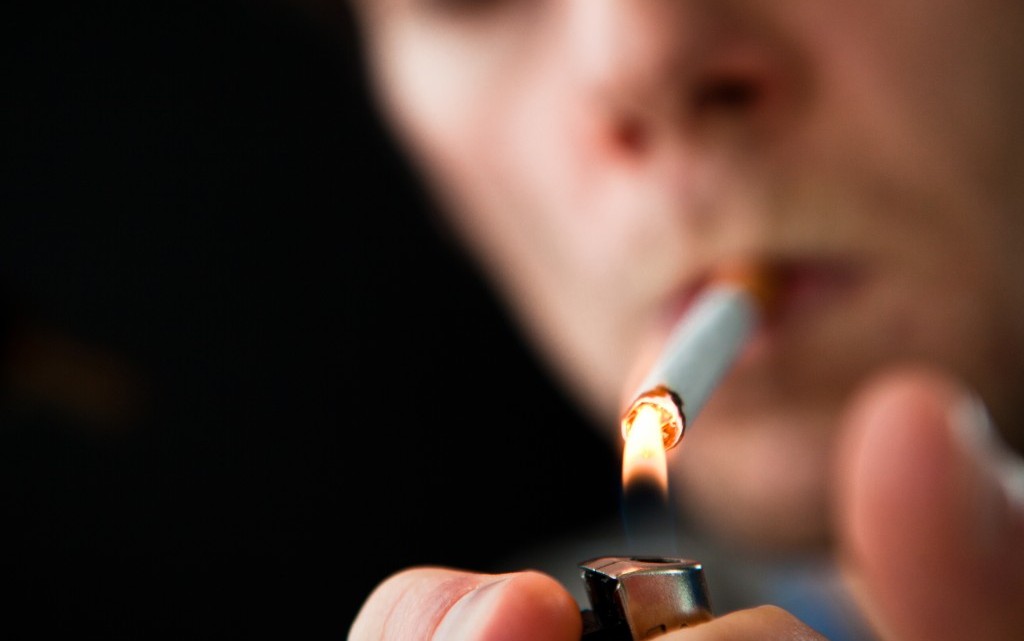by Jerry Landers
Much has changed in the health and lives of Hoosiers in the 25 years I’ve spent working in community health. One thing that has not changed, however, is Indiana’s high rate of smoking. There is no question: cigarette smoking is a significant inhibitor to improving the quality of life for Hoosiers, particularly those facing mental health challenges.
While smoking rates in Indiana have slightly decreased over the past few decades, our rate of smoking is consistently higher than the national average. Our current adult smoking rate is 21%, which ranks us 42nd in the nation.
At Aspire Indiana and Aspire Indiana Health, we serve over 18,000 unique clients each year in Marion, Boone, Hamilton, and Madison counties. As a community mental health center and federally qualified health center, a large portion of our patients have serious mental illness and/or substance use disorders—groups that are “super-users” of cigarettes, representing over 30% of smokers. Not only do one in three people with substance use disorder smoke cigarettes, but studies show cigarette smokers in drug treatment programs are six times more likely to relapse than treatment program participants who do not smoke cigarettes.
Much of the $7.6 billion annual cost associated with smoking is shouldered by employers, but taxpayers also feel this financial burden. Those who smoke cigarettes are disproportionately in a low socioeconomic status and often lack employer-provided health insurance. Medicaid recipients who smoke cost 51% more than those recipients who do not.
Despite these astronomical costs and the urgency to act, we still lose 11,000 Hoosier lives annually to smoking-related illness.
Through my work in community health, I know that our state dramatically under invests in community-based mental health promotion and prevention. We are 49th in per-capita public health spending. This means thousands of Hoosiers do not receive necessary support to manage their illness. This also means our state runs the risk of leaving tens of millions of dollars in vital, supportive federal resources unused, especially through the Medicaid Rehabilitation Option.
This year, The Alliance for a Healthier Indiana is traveling the state, hosting town hall-style meetings to raise awareness regarding Indiana’s poor health rankings. I attended the town hall in Muncie in June, with over 200 people, including community leaders and concerned citizens, who packed the Ball State Alumni Center. This meeting served as a call-to-action to address Indiana’s exceptionally high rate of smoking and invest more in public health.
A simple and effective solution to Indiana’s smoking crisis has been debated for three years by the Indiana Statehouse, but has failed to pass the Senate: raising the cigarette tax.
Raising the state’s cigarette tax by just $1.50 per pack would help 50,000 adults quit smoking. It would prevent 40,000 youth from ever starting. It would protect 10,000 babies from being smoke-exposed pre-birth. It would have a dramatic impact on low-income Hoosiers and those with mental illness and substance use disorder. It would yield health savings and would generate more than $1 billion over five years. That $1 billion could help our state address many public health issues, including mental health services and supports, tobacco cessation, our state’s ongoing opioid crisis and other urgent health issues.
There is no downside to implementing this tax. Why continue to delay action? Indiana has a crisis in cigarette smoking, mental health, substance addiction and lack of public health resources. Let’s not wait any longer. Let’s finally address this in the 2019 budget.
If you believe, like I do, that we have to act to improve Hoosier health, join the Raise It for Health campaign, www.RaiseItforHealthIN.com, to share your support for a healthier Indiana for all. Together, let’s improve quality of life in our state and save lives.
Jerry Landers is the Chief Executive Officer of Aspire Indiana Health














